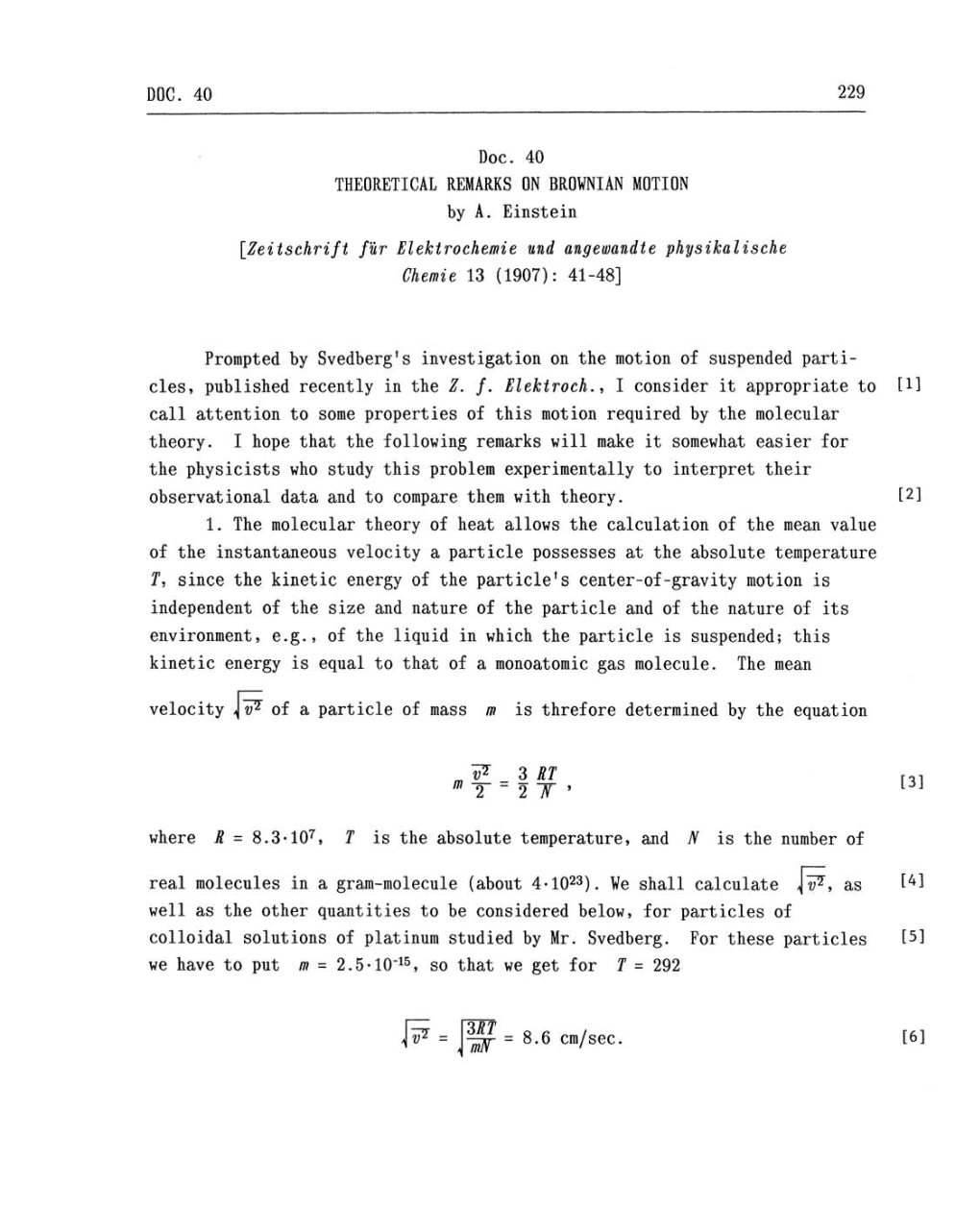DOC.
40
229
Doc. 40
THEORETICAL
REMARKS
ON
BROWNIAN MOTION
by
A.
Einstein
[Zeitschrift für Elektrochemie
und
angewandte
physikalische
Chemie
13
(1907):
41-48]
Prompted
by
Svedberg's
investigation
on
the
motion of
suspended
parti-
cles,
published
recently
in the
Z.
f. Elektroch.,
I consider it appropriate
to
[1]
call attention
to
some
properties of
this
motion required
by
the molecular
theory. I
hope
that the
following
remarks
will
make
it
somewhat
easier for
the physicists
who
study
this
problem
experimentally
to
interpret their
observational data
and to
compare
them
with theory.
[2]
1.
The
molecular
theory
of
heat allows the calculation of the
mean
value
of the instantaneous
velocity
a
particle
possesses
at
the
absolute
temperature
T,
since the kinetic
energy
of
the
particle's
center-of-gravity motion
is
independent
of the size
and nature
of the
particle
and
of the
nature of
its
environment,
e.g.,
of the
liquid
in
which
the particle is
suspended;
this
kinetic
energy
is
equal
to
that of
a
monoatomic
gas
molecule.
The
mean
velocity
v2
of
a
particle
of
mass
m
is threfore determined
by
the
equation
Z
-
3 RT
m
2
~
2 N
9
[3]
where
R
=
8.3.107,
T
is the absolute
temperature, and
N
is
the
number
of
real molecules
in
a
gram-molecule
(about
4.1023).
We
shall calculate
v2,
as
[4]
well
as
the
other quantities
to
be
considered
below,
for
particles
of
colloidal solutions of
platinum
studied
by
Mr.
Svedberg.
For
these particles
[5]
we
have
to put
m
=
2.5.10-15,
so
that
we
get
for
T
=
292
v2
=
=
8.6
cm/sec.
[6]
